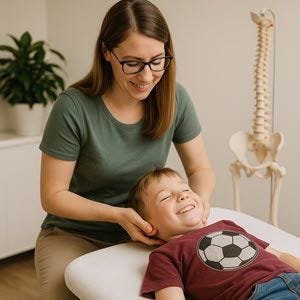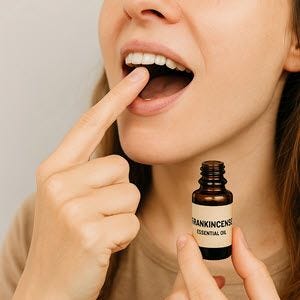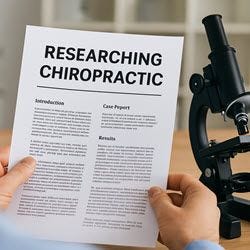Why Kids Need Chiropractic, Too
From First Steps to Soccer Fields
Real Stories, Real Benefits
Emily was six weeks old when she began screaming every night. Her parents tried various feeding changes, including rocking, using white noise, and taking stroller rides at 2 AM. Nothing worked. A friend suggested a chiropractor. After a gentle adjustment, Emily slept through the night for the first time. Her parents were shocked. She continued care, and her colic vanished.
Tyler, age 9, had frequent falls while learning to skateboard. He didn't complain of pain, but his posture shifted, and he began dragging one foot. His chiropractor found a slight imbalance in his pelvis. A few adjustments, and Tyler's coordination returned. No more dragging. No more frequent falls.
Stories like these aren't rare. Chiropractors who see kids often hear, "We didn't know this could help children."
Why See a Chiropractor So Young?
Birth can be complicated on a baby's body. Even in a smooth delivery, the pressure on a newborn's neck and spine can cause subtle misalignments. These can impact sleep, digestion, and overall well-being. As kids grow, they take hundreds of tumbles learning to crawl, walk, ride bikes, or just run across the backyard. While many recover quickly, some falls jar the spine and nervous system enough to cause lasting effects.
Older children face different stress. Backpacks, slouching over screens, and sports add strain to growing bodies. Minor injuries from soccer or gymnastics can go unnoticed but still affect alignment and nerve function.
Chiropractors use very gentle adjustments tailored to a child's age and size. A newborn's spine is adjusted with light fingertip pressure. For older children, care is still specific and gentle. It's not about force; it's about restoring proper movement and nerve communication.
Safety is often the first question parents ask. A study published in the Journal of Manipulative and Physiological Therapeutics reviewed thousands of pediatric visits and found chiropractic care for children to be highly safe, with rare and minor side effects, such as temporary soreness or fussiness after care (3).
Common Questions from Parents
Is it painful? No. Most kids giggle, relax, or even fall asleep during an adjustment.
How do I know if my child needs care? Signs can include poor sleep, uneven crawling, head tilts, frequent falling, or just seeming "off." However, many parents bring their kids in for preventive care.
What's the goal? To help a child's body work better by keeping the spine and nervous system free of interference.
Chiropractic for kids isn't just for problems; it helps keep them moving, growing, and thriving.
The Power of Frankincense Essential Oil
How One Drop Can Shift Your State of Mind and Body
Frankincense Essential Oil doesn't just smell good; it's a tool people turn to for calming nerves, lifting brain fog, and easing tension in the body. It's mainly known for supporting the nervous system and helping the body unwind when stress and overwhelm take over.
Nervous System Support and Mental Clarity
When stress hits hard, the nervous system goes into high alert. Frankincense, a blend crafted from pure frankincense, helps bring the system back down from that heightened state. This oil contains compounds such as alpha-pinene and incensole acetate, which have been found to interact with parts of the brain that regulate mood and memory. A small study in the Journal of Ethnopharmacology showed frankincense extract had calming and cognitive benefits through its influence on neurotransmitter activity [4].
A lesser-known way to use it is by placing a drop on the roof of your mouth, specifically on the soft palate. This method may help deliver the oil's effects more directly to the brain through nerve pathways. Ensure it's a therapeutic-grade essential oil labeled as safe for internal use. Only one drop is required. Once or twice a week is enough for most people. If it stings or burns, follow with a small amount of olive or coconut oil to neutralize the sensation.
Diffusing Frankincense in the room, applying a drop to the back of the neck, or rubbing it (diluted) over the heart or collarbone can also help when the mind won't settle. It's a favorite for meditation, prayer, and mental resets during long, draining days.
More Than a Brain Booster
Frankincense is also helpful for the body. Sore muscles, tight necks, and tension headaches respond well to massage with the oil, especially when combined with a carrier oil. Some users apply it around the temples or jawline when tension builds or under the nose to help with sinus pressure.
Skincare lovers often reach for it to improve tone, calm redness, or fade spots. When mixed with jojoba or coconut oil, it creates a soothing facial serum. If you're dealing with breakouts or dry patches, this oil brings balance without harsh chemicals.
One bottle can go a long way. It brings quiet to the mind, relief to the body, and a little more peace to your day -one drop at a time.
Could You Be Low on Iron?
Here's How to Tell and What to Do About It
Chronic fatigue that doesn't lift after a good night's sleep. Shortness of breath during ordinary activity. Headaches. Cold hands and feet. These could all point to a common deficiency: low iron.
Iron helps move oxygen throughout the body. When there isn't enough, the body can't produce the hemoglobin it needs, and things start to run sluggish. Some notice increased irritability or brain fog. Others experience a restless feeling in the legs at night.
Routine blood work may include ferritin levels, which reflect the amount of stored iron. Low ferritin levels can appear before the onset of full-blown anemia and are worth inquiring about if energy levels are low or hair is thinning. Some chiropractors and functional medicine doctors keep an eye on these markers because they show up often especially in menstruating women, vegetarians, athletes, and those recovering from illness or surgery.
Getting Iron from Nature
Red meat, especially beef liver, is still the richest natural source of highly absorbable heme iron. Lamb, venison, and duck also pack a good punch. For those who don't eat meat, cooked lentils, pumpkin seeds, spinach, tofu, and blackstrap molasses can help—but they contain non-heme iron, which the body absorbs less efficiently. Pairing these foods with vitamin C from citrus or bell peppers helps increase uptake.
Coffee and tea (including green tea) can reduce iron absorption from meals, especially if consumed at the same time. That doesn't mean giving them up—just spacing them out from iron-rich meals makes a difference.
Cooking in cast iron pans also adds small amounts of iron to food. Over time, this may help maintain levels, especially when paired with other sources.
Why Carbonyl Iron Is Different
Not all iron supplements are created equal. Some cause constipation or nausea. Carbonyl iron is a form that stands out because it's almost pure iron, in a fine powder form, and the body takes it in gradually. The slow release helps avoid the common digestive complaints associated with other forms, such as ferrous sulfate.
Unlike some iron salts that can damage the stomach lining or cause sharp spikes, carbonyl iron is gentler and safer to store at home, even around kids. Because it's absorbed based on the body's own need, there's less risk of taking too much. It's especially helpful for those who need long-term iron support without side effects.
According to a review in the American Journal of Therapeutics, carbonyl iron's gradual absorption and low toxicity profile make it a wise choice when supplementing iron levels without causing inflammation or digestive distress [5].
Words of Wisdom
Ah, summer, what power you have to make us suffer and like it. ~ Russell Baker
What good is the warmth of summer, without the cold of winter to give it sweetness? ~John Steinbeck
Summertime is always the best of what might be. ~Charles Bowden
Keep your face to the sun and you will never see the shadows. ~Helen Keller
Researching Chiropractic
Chiropractic clinical case histories have been a regular feature of our patient newsletter since its inception. There seems to be no limit to the health problems that respond positively to chiropractic care. How many people suffering, reliant on medication and drugs, and facing a life of limitation could be helped by chiropractic care?
Probably most of them.
Migraines & Neck/Back Pain Resolution. A 23-year-old woman with a ten-year history of chronic migraines, neck pain, and low-back pain received diversified, Thompson, and Grostic upper-cervical adjustments. Over time, migraines and musculoskeletal symptoms resolved, and medications were discontinued.(6)
Chronic Muscle Spasms & Headaches A patient with chronic muscle spasms, neck pain, and headaches received spinal manipulation guided by palpatory tenderness. Post-care, the patient reported substantial symptom relief—suggesting chiropractic manipulation may provide anti-nociceptive effects.(7)
Humor
Why don't oysters share their beach towels?
Because they're a little shellfish.
What do you call a snowman in July?
A puddle.
How do chiropractors enjoy summer?
One adjustment at a time!
What's a chiropractor's favorite summer song?
"Twist and Shout!"
Bye. I’ll show myself out.
Please write to us or stop by to share your feedback. Are there any subjects you'd like to hear about? Anything you dislike? Feedback is always important to us. We’d love for you to share the newsletter.
Did you know I have 2 other newsletters?
One is called UnLucid and its a lot of personal stuff and then there is The Intuitive Chiropractor: where I talk more about the stuff I talk about in the office. I’ll post links to a couple articles below. And don’t forget to support our retail situation, TNL.
Any other ways I can help? Contact me. You can also reply to this email.
Thanks for reading all the way to the end.
Live Long and Prosper,
-Dan
References





